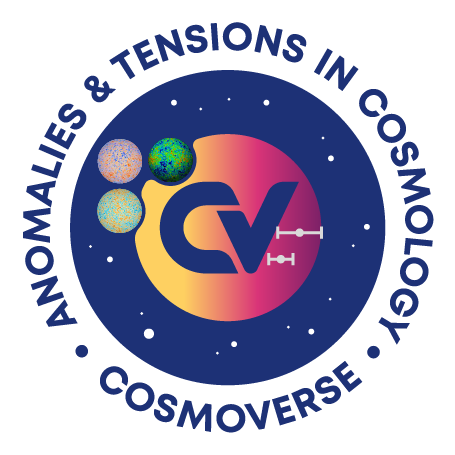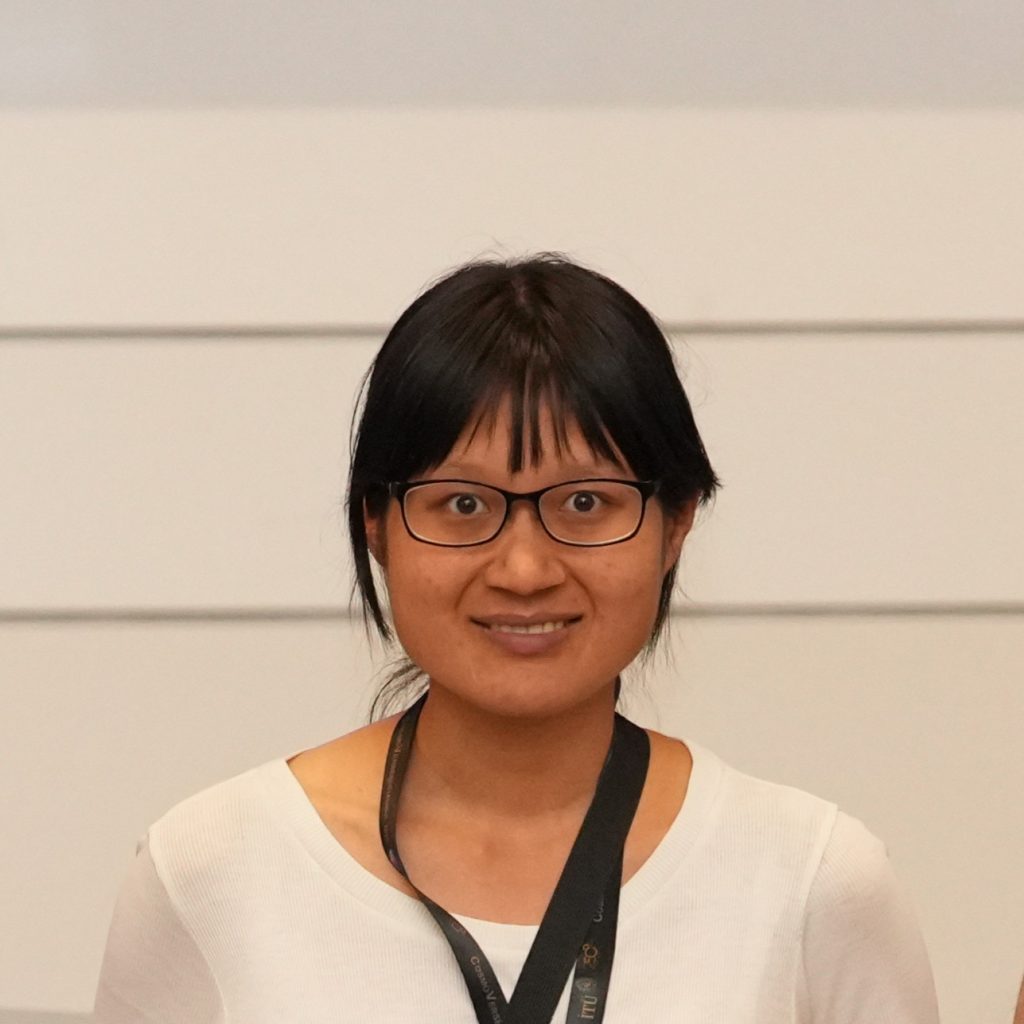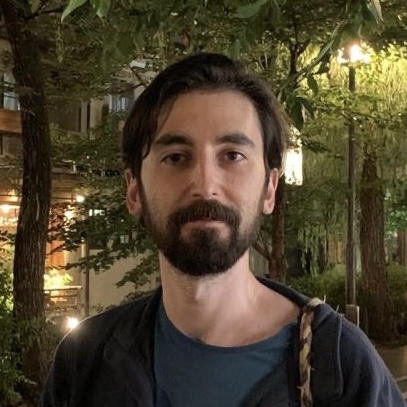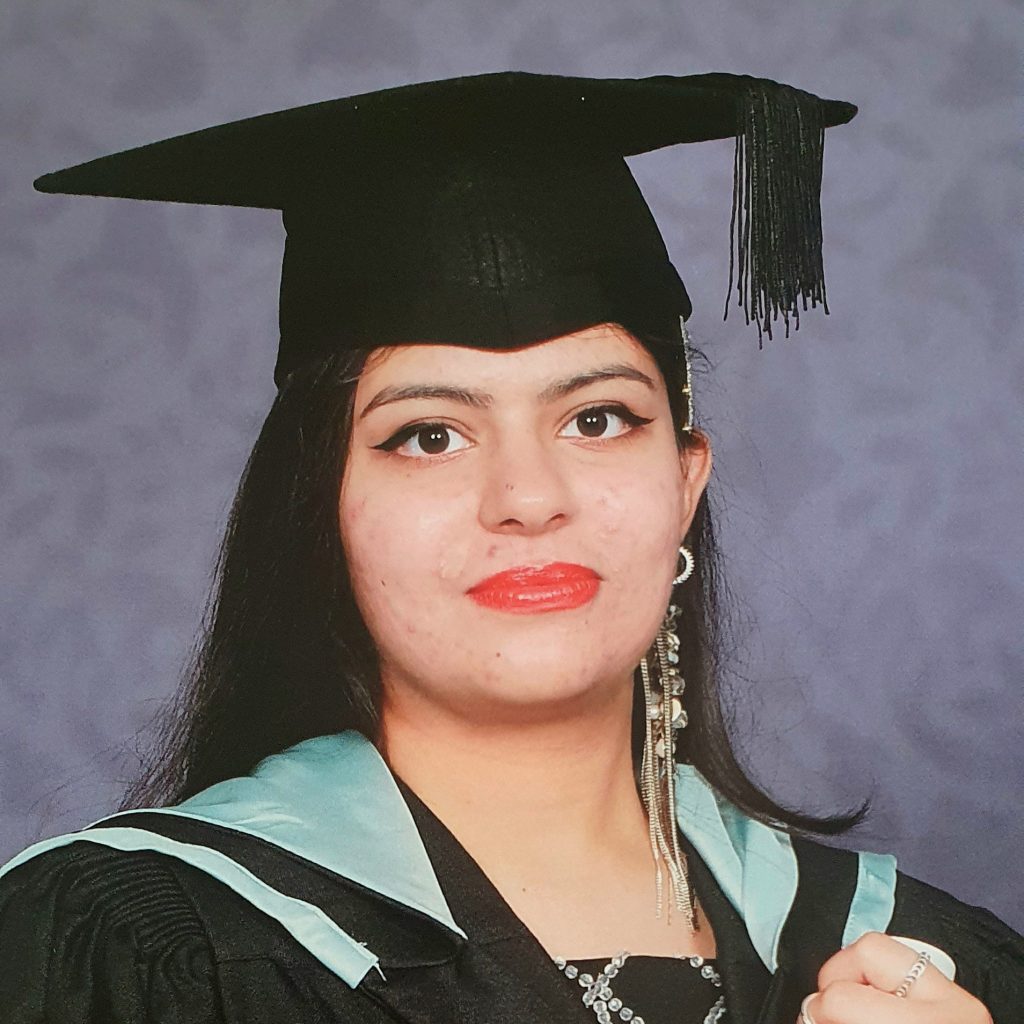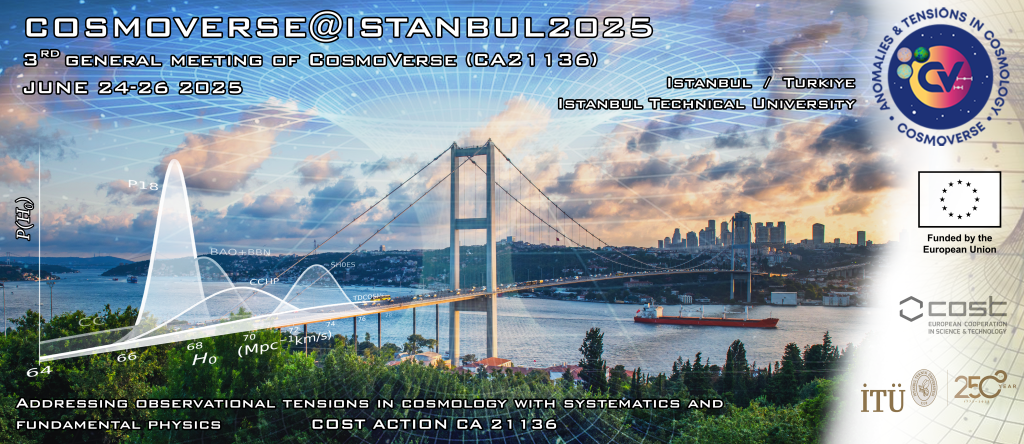
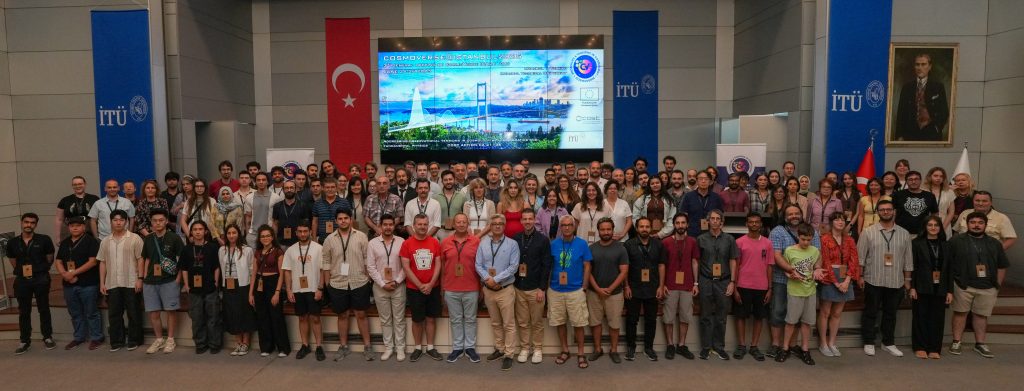
Our understanding of the Universe is at a turning point with the predictions of the standard cosmological model and the observations from different surveys are showing tensions in several key areas. The disagreement is expressed in the value of cosmic expansion as well as in the growth of large-scale structure in the Universe. New cosmological surveys, many of which are European, may expose tension in additional areas of the concordance model. The question of cosmological tensions can be confronted in a number of ways. Firstly, survey data needs to be further analyzed for potential systematic uncertainties or biases. Secondly, there have been numerous advances in approaches to data analysis and statistics, some of which provide less dependence on cosmological models to make cosmological parameter estimates. Lastly, there are a plethora of new proposals from fundamental physics which range from novel neutrino physics to dark energy proposals (and others) which may contribute to a solution to the cosmological tensions problem. These represent the three research themes through which cosmological tensions will either be alleviated or resolved.
CosmoVerse@Istanbul 2025 (24 June – 26 June 2025 – 27 June Management Committee Meeting) is the third annual conference in a series of conferences that aim to establish a link between the different research areas in cosmology with the main focus on challenges of tensions in cosmological survey data.
This conference is organized within the COST Action initiative CA21136 – Addressing observational tensions in cosmology with systematics and fundamental physics (CosmoVerse).
The first conference called CosmoVerse@Lisbon 2023 took place between 30 May and 1st June 2023. All of the recorded talks and presentations are public and available here. The second conference called CosmoVerse@Krakow 2024 took place between 9 and 11 July 2024. All of the recorded talks and presentations are available here.
The conference is organized together with İstanbul Technical University in İstanbul.
Find the indico website with registration, abstract submission, and timetable here.
Main topics
● Observational cosmology and Systematics (cross-correlation of data, systematic effects)
● Data analysis (astrostatistics; data science in astronomy; Bayesian analysis; machine learning and artificial intelligence)
● Fundamental Physics (challenge of the cosmological hypothesis, dark energy and modified gravity, neutrino physics, dark energy, and dark matter interaction)
Invited speakers
Mariam Bouhmadi Lopez (Basque Foundation for Science, Bilbao, Spain)
Asta Heinesen (Niels Bohr Institute, Copenhagen, Denmark)
Eric Linder (Berkeley, USA)
Florian Niedermann (Nordita, Stockholm, Sweden)
Daniel Scolnic (Duke University, Durham, USA)
Brent Tully (University of Hawaii, USA)
Angus Wright (German Centre for Cosmological Lensing (GCCL) at the Ruhr Universität Bochum (RUB), Germany)
Best Posters
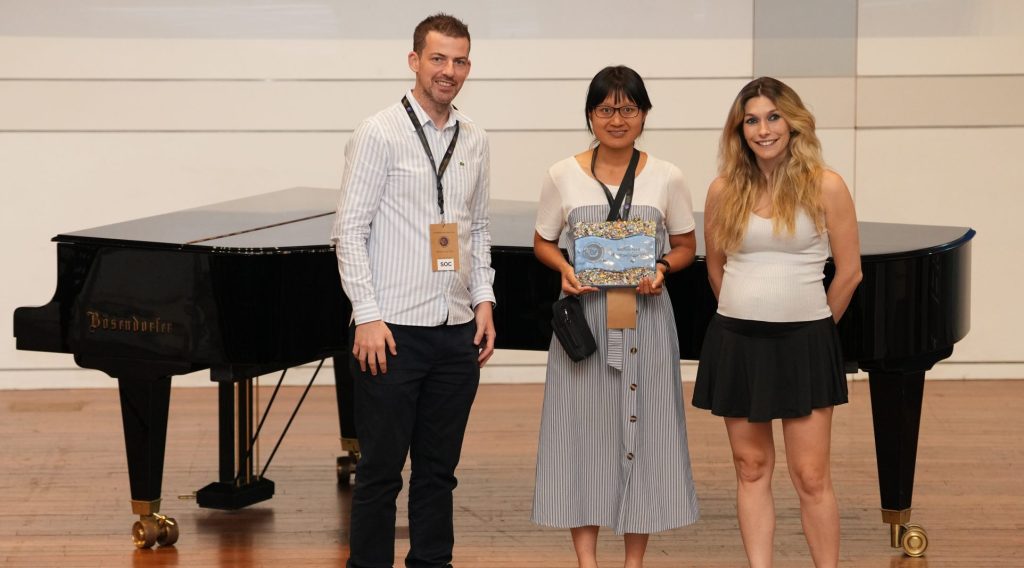
Invited Talks
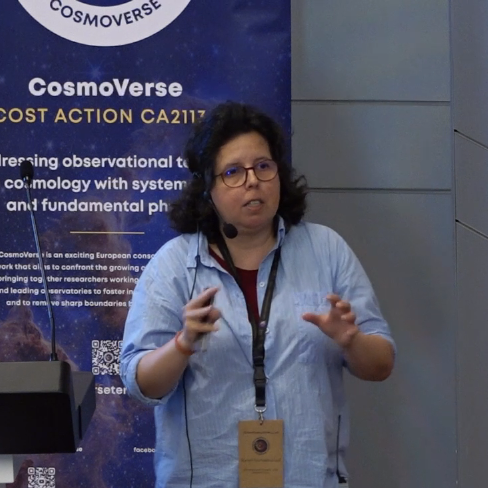
Mariam Bouhmadi Lopez
The Dark Side of the Cosmos: Exploring Dark Energy and Modified Gravity
We are currently witnessing a remarkable era in the fields of cosmology and gravitation, as an ever-increasing amount of observational data continues to be collected. One of the most perplexing questions confronting cosmologists today concerns the mysterious source responsible for the Universe’s recent accelerated expansion. The most widely accepted explanations for this phenomenon involve either a dark energy component or a modified theory of gravity. In this talk, we present, on the one hand, several dark energy models, ranging from axion-like scalar fields and kinetic gravity braiding models to 3-form fields. On the other hand, we explore modified theories of gravity, in particular those based on $f(Q)$ gravity, as alternative explanations for the Universe’s current accelerated expansion.We also discuss the observational constraints on these models. Furthermore, we examine how they may contribute to a potential resolution of the ongoing $H_0$ and $S_8$ tensions.
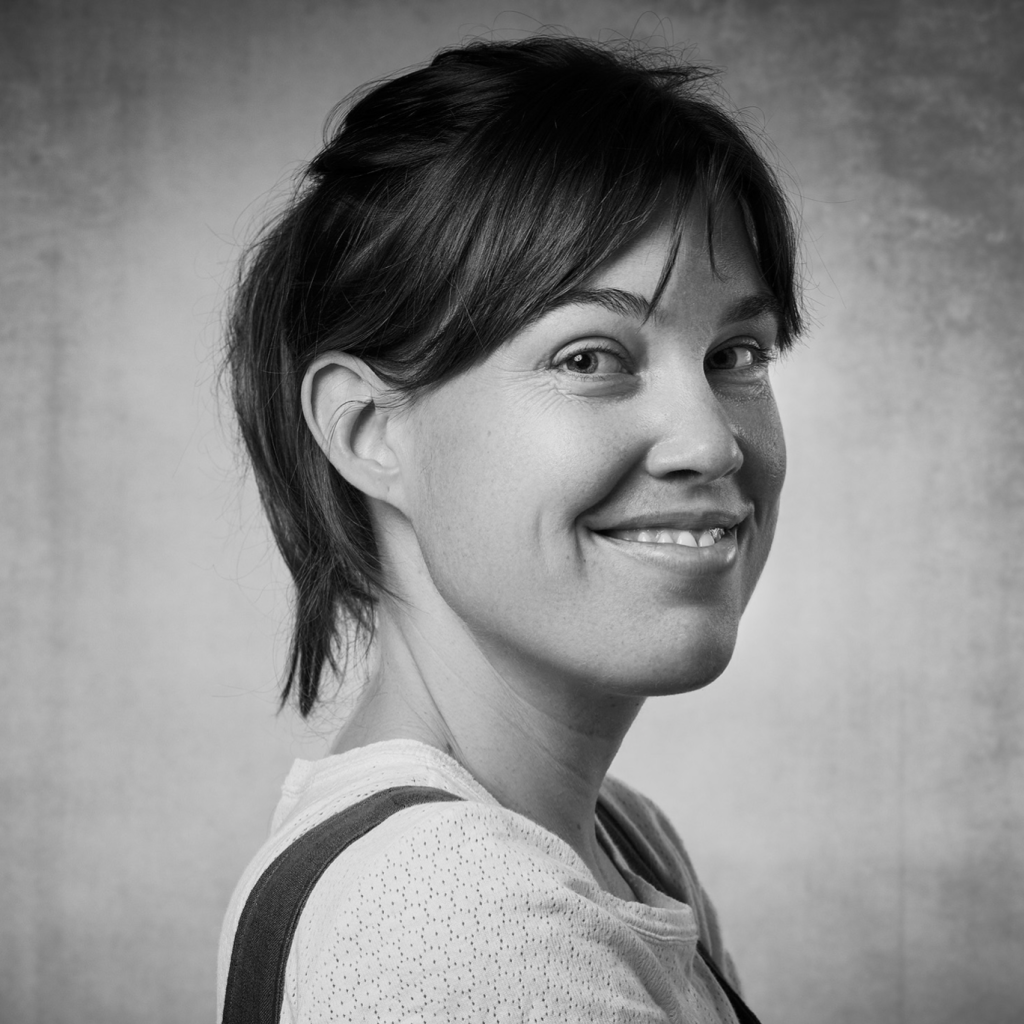
Asta Heinesen
Anisotropic cosmography of the local Universe
Cosmography is conventionally used to analyze data in an FLRW metric while being agnostic to the field equations of gravity.
I will talk about how we can go one step further to obtain a cosmography that is free of assumptions about the space-time metric as well.
With this approach, we can in principle obtain model-independent information about the expansion and curvature of our anisotropic cosmic neighbourhood, given sufficiently accurate observations of luminosity distance, angular diameter distance, redshift drift, position drift, etc. Such cosmography methods are complementary to the conventional more model-dependent approaches, and while they require high-precision data they hold a great promise for enabling model-independent constraints in cosmology. I will describe the formalism for doing anisotropic cosmography with luminosity distance, redshift drift, and position drift data, and I will discuss things that are good to be aware of when using cosmography methods in practice.
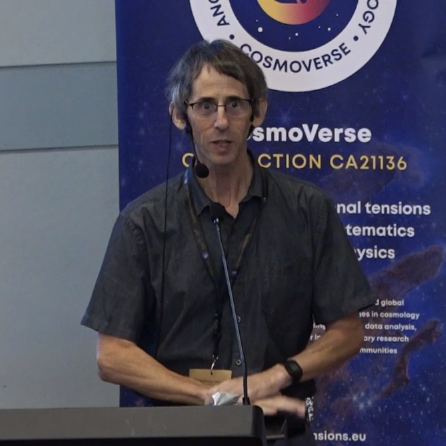
Eric Linder
Dark Energy Dynamics and Data
Dark energy away from a cosmological constant Λ – like early universe inflation that ends – can be understood in terms of well defined physical behaviors. These guide dark energy into thawing or freezing classes, with w0–wa arising as a physical calibration of the phase space. Other regions of phase space – zones of avoidance – require violation of some basic principle. We explore these cases, drawing a direct analogy with how non-Gaussianity in inflation can add physics beyond standard dynamics. We examine the physics implications if the best fit of current data is taken to be truth.
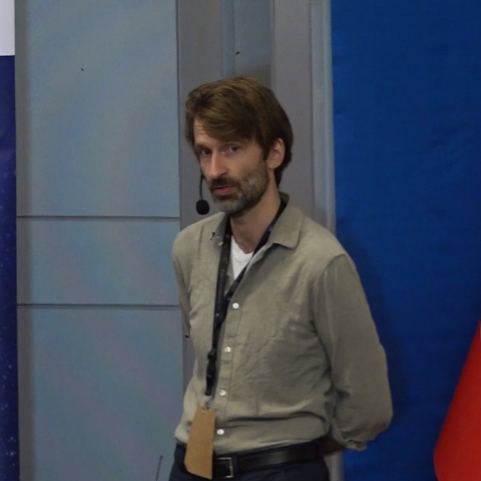
Florian Niedermann
The Hubble Tension as the Signature of a New Phase Transition
In this talk, I will argue that the Hubble tension points to new physics in the early universe, between big bang nucleosynthesis and recombination. Specifically, I will propose that it might be the signature of a new phase transition in the dark sector. The latent heat released during the phase transition provides a sizeable energy injection into the cosmic fluid, shortening the sound horizon and raising the early-universe inferred value of the Hubble parameter. I will present two concrete microphysical realizations of this idea: Cold New Early Dark Energy is a triggered vacuum phase transition that occurs shortly before matter-radiation equality and shares phenomenological features with other early dark energy models. Hot New Early Dark Energy, by contrast, is a supercooled phase transition that occurs at higher redshift and heats the dark sector, providing a concrete realization of a (stepped) dark radiation model.
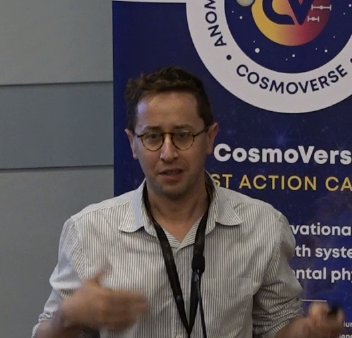
Daniel Scolnic
The Hubble Tension and Evolving Dark Energy Measurements: State of the Evidence
In this talk, I will review the latest measurements of the Hubble Constant and of dark energy from a variety of techniques. I will discuss differences in sensitivity, particularly with Type Ia supernovae, to different redshift ranges. I will also differentiate what can be producing the Hubble Tension signal versus the evolving dark energy, and offer guidance on various theoretical directions. Finally, I will forecast constraints from the next generation of telescopes like LSST and Roman on answering these problems.
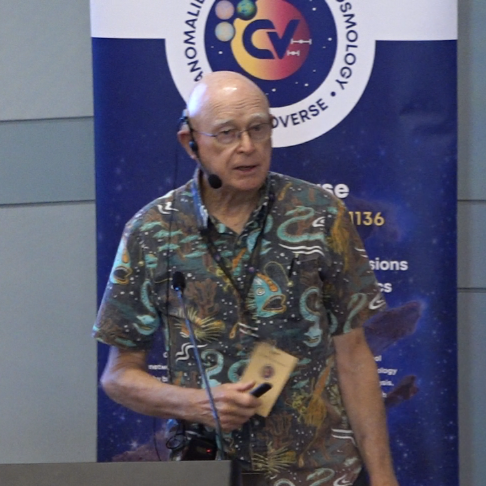
Brent Tully
A Population II TRGB-SBF Route to H0 with HST and JWST
The Population I cepheid-supernova path to a value of the Hubble constant can be
complemented by an equally accurate Population II path coupling the tip of the red giant
branch and surface brightness fluctuation methodologies. Programs with HST are now being
carried forth with JWST. The linkage between TRGB and SBF can be made with simultaneous
observations of the high surface brightness cores and low surface brightness halos on individual
early-type galaxies with JWST NIRCam. Further SBF observations can be made to large numbers
of targets at redshifts in the Hubble flow regime. Preliminary results will be presented across
the full range from zero-point calibration to the TRGB-SBF transfer to distances acquired at
z=0.03.
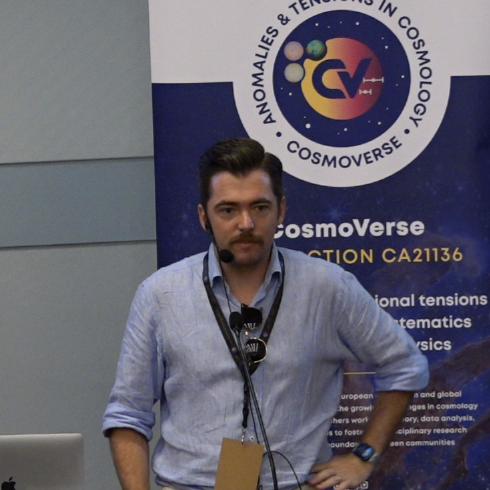
Angus Wright
Cosmic Shear Cosmology with the Completed Kilo-Degree Survey
The fifth (and final) data release of the Kilo-Degree Survey (KiDS) provides significantly more than just an increase in survey area. Instead, additional observations couple with improvements in data quality, data reduction, and value-added data-products, to make KiDS-DR5 the most robust and reliable release produced by KiDS to date. We leverage the lensing sample from this state-of-the-art dataset (called KiDS-Legacy) to perform the most robust and precise analysis of cosmic shear to date, finding KiDS-Legacy to be wholly consistent with the results from the Planck Cosmic Microwave Background (CMB) analyses. This talk will provide an introduction KiDS-DR5, discuss how this dataset differs with respect to previous KiDS releases, and focus in particular on how these differences have influenced the analysis of cosmic shear with KiDS-Legacy. I will discuss the causes of systematic variation in the parameter constraints that we observe between KiDS data releases, and discuss the implications that these systematic effects have for future analyses of cosmic shear.
Talks
Dily Duan Yi Ong
Scanning for cosmological tensions across a DiRAC-enabled grid of models, datasets and samplers
Recent cosmological surveys have revealed persistent discrepancies within the context of the concordance model regarding the values of the H0 [1907.10625], σ8 [1610.04606] and ΩK [1908.09139, 1911.02087] when estimated with different datasets. Determining the level of disagreement between multidimensional fits is called “tension quantification” [1902.04029].
We approach this problem by producing a re-usable library of MCMC chains, Nested sampling runs, and machine learning emulators across a grid of cosmological models through detecting cosmological tensions between datasets from the DiRAC allocations DP192 & DP264.
This library is available as part of the package unimpeded (https://github.com/handley-lab/unimpeded) and serve as an analogous grid to the Planck Legacy Archive (PLA), but machine learning enhanced and expanded to enable not only parameter estimation (currently available with the MCMC chains on PLA), but also allowing cosmological model comparison and tension quantification, as well as including pairwise comparisons between modern cosmological datasets (CMB, BAO, Supernovae, Weak Lensing). Currently, a systematic coverage of 10 cosmological models and 60 datasets (to be extended) are easily accessible via the unimpeded package using a few lines of code. In addition, we provide machine learning emulators [2205.12841] of these marginalised likelihoods for use in future analyses as a fast and flexible alternative to MCMC chains and nested samples for re-use in future analyses.
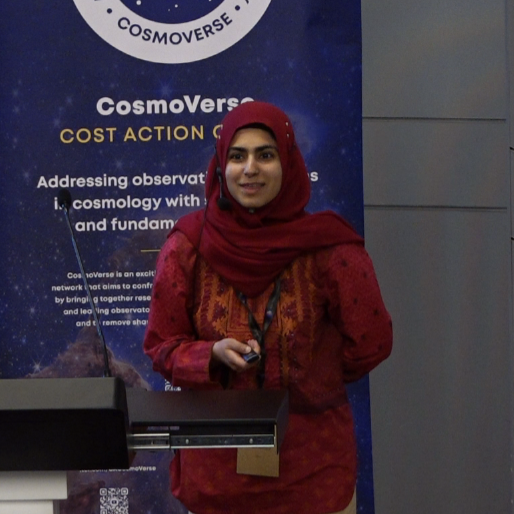
Minahil Adil Butt
Outer regions of galaxy clusters as a new probe to test modifications to gravity
We perform a stacking analysis of galaxy cluster velocity phase space using the caustic technique. By stacking 128 clusters, we create four robust stacked clusters with excellent agreement between caustic masses and binned medians. We model the gravitational potential using the NFW profile, validating the $\Lambda$CDM mass-concentration relation. Implementing the Chameleon screening model, we find constraints on modified gravity parameters consistent with $\Lambda$CDM, yielding stringent upper limits of $|f_{\rm R0}| \lesssim 4 \times 10^{-6}$ at 95% C.L. for $f(\mathcal{R})$ gravity. We also test the caustic technique’s effectiveness in constraining MOND in individual clusters.
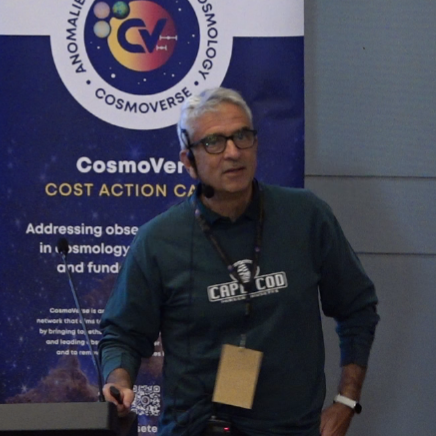
Leandros Perivolaropoulos
Hubble tension or distance ladder crisis?
I present an up-to-date compilation of published Hubble constant ($H_0$) measurements that are independent of the CMB sound horizon scale. This compilation is split in two distinct groups: A. Distance Ladder Measurements sample comprising of 20 recent measurements, primarily from the past four years, utilizing various rung 2 calibrators and rung 3 cosmic distance indicators. B.One-Step Measurements sample including 33 measurements of $H_0$ that are independent of both the CMB sound horizon scale and the distance ladder approach. These 33 measurements are derived from diverse probes such as Cosmic Chronometers, gamma-ray attenuation, strong lensing, megamasers etc. Statistical analysis reveals a significant distinction between the two samples. The distance ladder-based sample yields a best fit $H_0 = 72.8 \pm 0.5$ km s$^{-1}$ Mpc$^{-1}$ with $\chi^2/dof=0.51$ indicating some correlations. The one-step measurements result in $H_0 = 69.0 \pm 0.48$ km s$^{-1}$ Mpc$^{-1}$ with $\chi^2/dof=1.37$ indicating some internal tension. Possible local physics approaches that may explain this finding will be discussed.
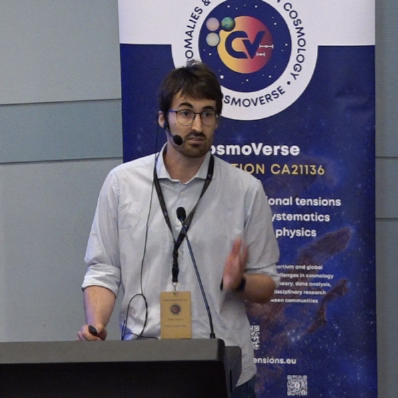
Matteo Schulz
Cosmology with GWxHI Cross-Correlation with Future Observatories
We explore the potential of cross-correlation between gravitational waves (GWs) and 21 cm intensity mapping (IM) from neutral hydrogen emission (HI), focusing on its role in view of future high-precision observatories, specifically Einstein Telescope (ET) and the Square Kilometer Array Observatory (SKAO). We model the large scale structure evolution by making use of 3D lightcones of the dark matter density distribution up to redshift $z \sim 3$ from both linear perturbation theory and N-body simulations. Assuming that GW and HI are different tracers of the same underlying density field, we infer cosmological parameters from both the angular power spectrum (auto-correlation) and the angular cross-power spectrum (cross-correlation) of these probes. We show that synergies between future GW and HI experiments will significantly improve standard sirens measurements, thanks to increased sensitivity and high-redshift coverage, allowing to constrain cosmological parameters to a level comparable to that of well-established alternative probes, such as Type Ia Supernovae.
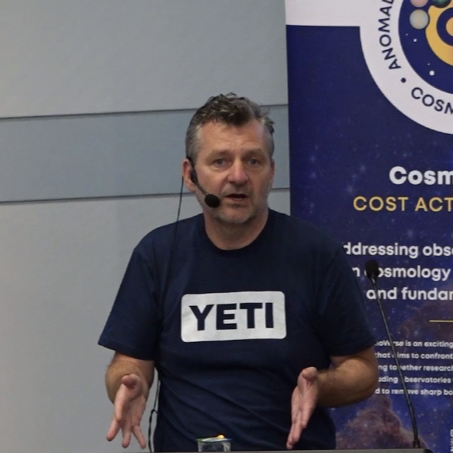
Geraint Lewis
On the Cosmological Time Delationof High Redshift Quasars
One of the fundamental predictions of modern cosmology is that we should see the distant universe run slowly, with time dilated by the expansion of space. Numerous searches for this cosmic time dilation in the light curves of distant quasars, some of the most luminous objects in the universe, have failed to find the expected signal, with claims that this challenges the standard cosmological model. I present a new analysis of a sample of quasars monitored over two decades, testing competing hypotheses within a Bayesian framework to search for the influence of cosmology. The key result is that modern cosmology is safe, quasars are truly luminous objects at immense distances, and I will explore how available data and chosen approaches limited previous studies.
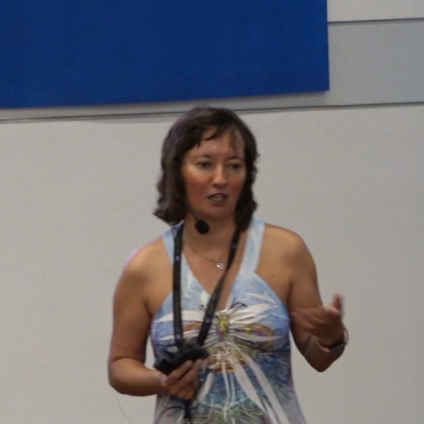
Denitsa Staicova
Modern Statistical Methods for Cosmological Inference: Samplers, Likelihood, and Beyond
We present a comprehensive statistical framework for cosmological parameter estimation, focusing on Baryon Acoustic Oscillation (BAO) analyses in the light of the DESI DR2. We focus on two complementary directions: the performance evaluation of various sampling algorithms and the investigation of likelihood formulations. We will discuss the role of the choice of a sampler in both its performance as measured by runtime efficiency and parameter accuracy across different dimensionalities and probability landscapes. Then we will examine statistical nuances in BAO analysis, comparing different likelihood formulations and their effect on the parameter constraints and their higher-order distribution properties.
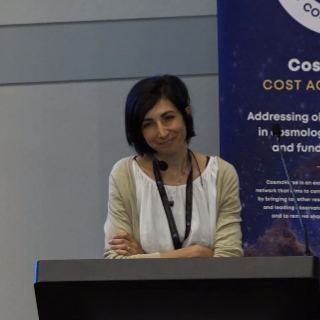
Elisabeta Lusso
The present and the future of quasars in cosmology
I will review what the prospects of quasars in the context of observational cosmology are, and I will present recent measurements of the expansion rate of the Universe based on a Hubble diagram of quasars detected up to the highest redshift ever observed (z~7.5). The derived distances are in agreement with the standard flat ΛCDM model up to a redshift of ~1.5, but they show significant deviations at higher redshifts. Yet, several authors suggested that this discrepancy is due to inconsistencies between the low- and high-redshift sources within the parent sample, or to a redshift evolution of the relation. I will discuss these issues through a quantitative comparison with supernova-derived distances in the common redshift range, complemented by simulations showing that all the claimed inconsistencies would naturally arise from any limitation of the cosmological model adopted for the data analysis, that is, from our ignorance of the true cosmology. I will finally show that the synergy amongst multi-wavelength facilities (current and future) will provide the needed sample statistics to obtain constraints on the observed deviations from the standard cosmological model which will rival and complement those available from the other cosmological probes.

Maria Giovanna Dainotti
Title
coming soon
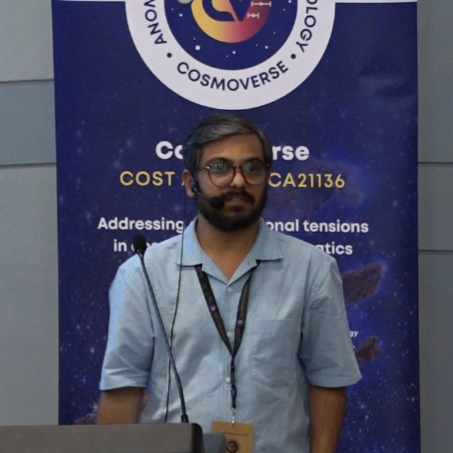
Chandra Shekhar Saraf
Forecasts on S8 using tomographic cross-correlations with LSST
The well established ΛCDM model of cosmology suffers from several challenges and disparities like the nature of dark matter and dark energy, accelerated expansion of the Universe and tensions in cosmological parameters derived from different observations. Tomographic cross-correlation measurements from the next-generation CMB experiments and galaxy surveys will allow us to robustly quantify deviations from the ΛCDM model. However, with increasing quantity and quality of observational data, it is crucial to mitigate the systematic errors that may bias these cross-correlation measurements. In this talk, we will present forecasts on the S8 parameter from tomographic cross-correlations between the Vera C. Rubin LSST photometric galaxy survey and CMB experiments (Simons Observatory and Planck). We will discuss the importance and mitigation strategies for redshift bin mismatch of galaxies due to photometric redshift uncertainties. Although this talk will be based on LSST simulations, the results and discussions should be applicable to photometric galaxy surveys and their cross-correlations measurements in general.
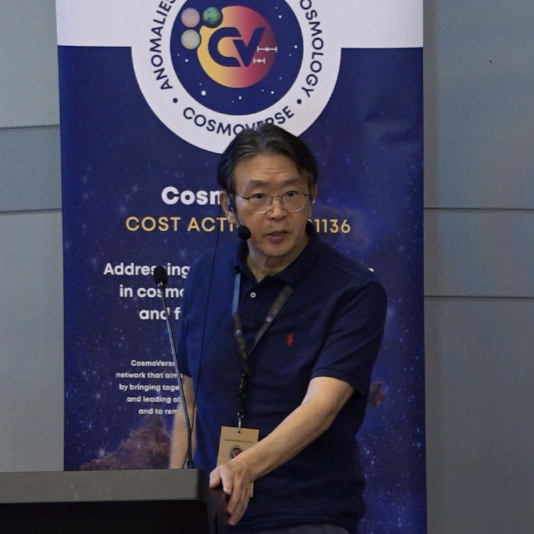
Young-Wook Lee
Strong progenitor age bias in supernova cosmology and alignment with DESI BAO
Supernova (SN) cosmology is based on the key assumption that the luminosity standardization process of type Ia SNe remains invariant with progenitor age. However, our comprehensive age measurements of 360 SN host galaxies reveal a significant (5.5 sigma) correlation between standardized SN luminosity and progenitor age, which is expected to introduce a serious systematic bias with redshift in SN cosmology. After correcting for this age bias with redshift, the SN dataset aligns more closely with the recent DESI BAO result, bringing the revised ‘standard candle’ (SNe) into concordance with the ‘standard ruler’ (BAO). When the three cosmological probes (SNe, BAO, CMB) are combined, we find a strong (larger than 7 sigma) tension with the LCDM model, suggesting a time-varying dark energy equation of state in a currently non-accelerating universe.
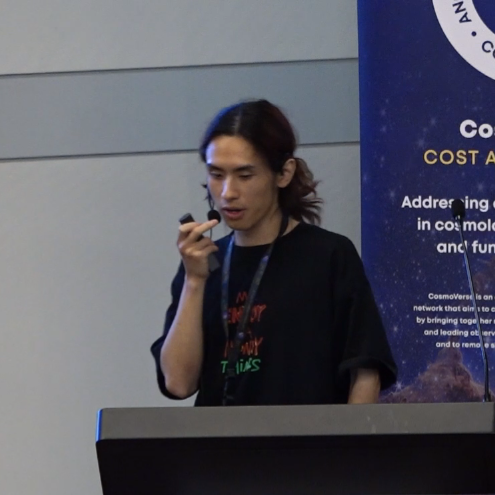
Hanyu Cheng
Testing Dynamical Dark Energy Models with Novel Cosmological Data
We explore an extension of the $\Lambda$CDM model that introduces a time-dependent evolution of the pressure parameter $p$ in the dark energy fluid. In this process, the corresponding energy density $\rho$ is derived by a continuity equation. Consequently, the equation of state $w\equiv p/\rho$ evolves during the late-time expansion of the Universe. We model the pressure parameter using a Taylor expansion within the dynamical dark energy (DDE) framework. Initially, we truncate the expansion at first order, introducing a single additional parameter that allows the equation of state to deviate from the cosmological constant value. We then extend the analysis to second order, demonstrating that observational data can constrain both these additional parameters. Since no significant deviation from $\Lambda$CDM was detected for the relevant cosmological parameters, we did not include higher-order terms. To examine the parameter space of this extended model, we modified the publicly available CAMB code and performed a Markov Chain Monte Carlo analysis, extending the $\Lambda$CDM parameter space to incorporate the pressure parameterizations.
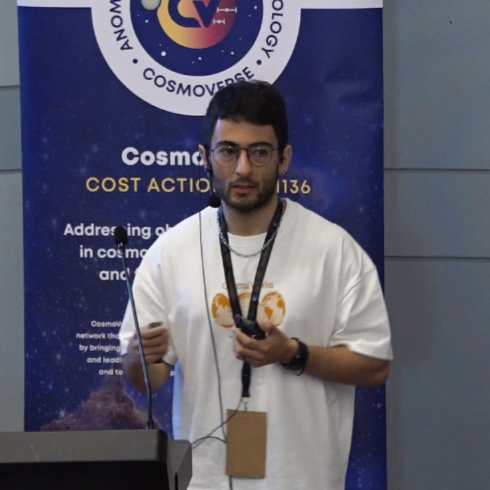
Juan Mena-Fernández
Implications for cosmological expansion models from the final Dark Energy Survey BAO and SN data
The Dark Energy Survey (DES) recently released the final results of its two main probes of the expansion history: Type Ia Supernovae (SN) and Baryonic Acoustic Oscillations (BAO). In this work, we explore the cosmological implications of these data in combination with external Cosmic Microwave Background (CMB), Big Bang Nucleosynthesis (BBN), and age-of-the-Universe information. The BAO measurement, which is $\sim2\sigma$ away from {\tt Planck-2018}’s $\Lambda$CDM predictions, pushes for low values of $\Omega_m$ compared to {\tt Planck-2018}, in contrast to SN which prefers a higher value than {\tt Planck-2018}. We identify several tensions among datasets in the $\Lambda$CDM model and try to solve them by including curvature or evolving dark energy. For DES BAO and SN in combination with {\tt Planck-2018}, we find a $3.2\sigma$ deviation from $\Lambda$CDM when assuming $w_0w_a$CDM. For the combination of all the background cosmological probes considered (including $\theta_\star$ from {\tt Planck-2018}), we still find a deviation of $2.8\sigma$ in the $w_0-w_a$ plane. This work provides further evidence for non-$\Lambda$CDM physics or systematics, which is consistent with recent claims in support of evolving dark energy.
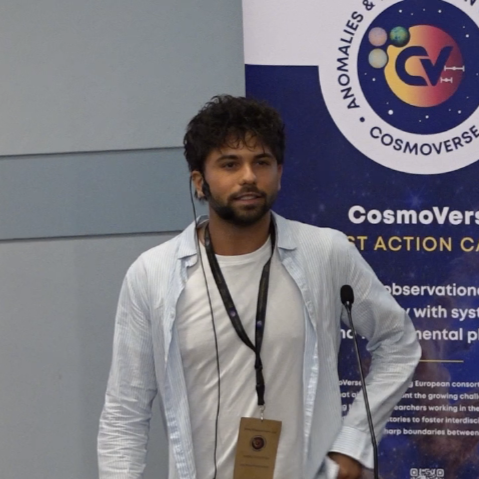
Andrea Cozzumbo
Model-independent constraints in the context of multi-messenger cosmology
Gravitational wave (GW) and multi-messenger (MM) astronomy provides new ways to gain insights into the Dark Energy (DE) phenomenology, through the distance-redshift relation, as well as into potential deviations from General Relativity (GR), via the distance duality relation. Both analyses involve the same astrophysical observables, making MM astronomy a powerful tool to explore simultaneously the nature of DE and gravity. To this end, provided our current ability to localize $\gamma$-ray bursts (GRBs), we employ a catalog of 38 of these events supposedly originated from binary neutron star (BNS) mergers detected by the Fermi Gamma-ray Space Telescope and the Neil Gehrels Swift Observatory. We generate a mock dataset of MM events by means of a prior-informed Fisher matrix approach and forecast the sensitivity of the Einstein Telescope (ET) to constrain cosmological and modified gravity (MG) parameters. We compare the performance of standard DE and MG parametrizations with a more flexible, model-independent method based on Gaussian Processes (GP). We examine synergies among next-generation GW interferometers and cosmological probes such as Cosmic Microwave Background (CMB), Type IA Supernovae (SnIA) and Baryon Acoustic Oscillation (BAO) data. We capitalize on their complementarity to break parameter degeneracies, showing that fewer than 40 GRB-GW events will provide unprecedented accuracy in constraining the DE phenomenology as well as potential departures from GR.
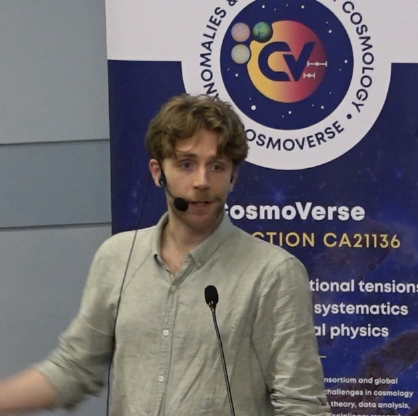
Enrico Specogna
Testing Modified Gravity in Cosmology: a few Phenomenological and Theory-Specific Study Cases
In this talk I will review how modified gravity parametrizations can, in principle, be exploited to not only test general relativity, but also tackle the problematic tensions that riddle cosmology in its current state, considering these issues by the point of view of both background observables and perturbations. More precisely, I will aim to provide insight into questions such as: can phenomenological modifications in the growth of the large-scale structure, introduced at the linear level of the perturbation equations of general relativity, be detected or detectable by current and future cosmological data, such as the weak lensing of the cosmic microwave background photons? To which extent are modifications to the Hubble expansion rate, within $f(R)$ and $f(R,T)$ theories, valid and useful to resolve the Hubble tension, according to supernovae and baryonic acoustic oscillations data? I will tackle these questions by looking at possible ‘slips’ away from general relativity in cosmic microwave background data, by means of both inference and reconstruction of $\mu_0$ and $\Sigma_0$, two phenomenological parameters that introduce such ‘slips’ in the Poisson and lensing equations from general relativity. I will then move onto two specific examples of the $f(R)$ and $f(R,T)$ theories of modified gravity, describing how they can modify the standard model’s expansion history and whether current data point to any such deviations from the accepted paradigm.
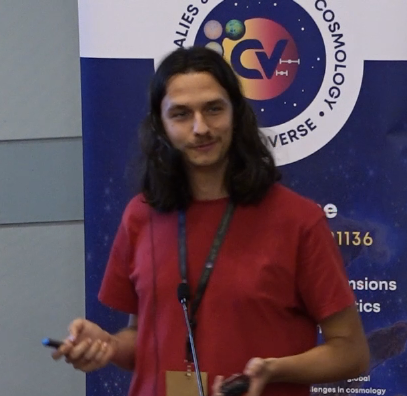
Davide Pedrotti
BAO miscalibration cannot rescue late-time solutions to the Hubble tension
Baryon Acoustic Oscillations (BAO), together with Type Ia Supernovae (SNeIa), increasingly disfavor late-time modifications as viable resolutions to the Hubble tension. A key argument against post-recombination solutions—the so-called “no-go theorem”—relies critically on BAO data: since BAO constrain angular scales proportional to rdH0, a higher H0 implies a smaller rd, in tension with the value inferred from ΛCDM fits to Planck or BBN+BAO. However, the BAO analysis pipeline involves several steps that assume a fiducial cosmology, raising concerns about potential model dependence. In this proof-of-principle work, we explore the impact of a possible miscalibration (whose origin we remain agnostic about) in the BAO scale that effectively shifts the inferred BAO positions closer to the observer, leading to larger values of rdH0. We find that, even if such a modification were present, “popular” late-time modifications would still fall short of resolving the Hubble tension, to no small extent because of tight constraints on the shape of the expansion history arising from high-redshift uncalibrated SNeIa.
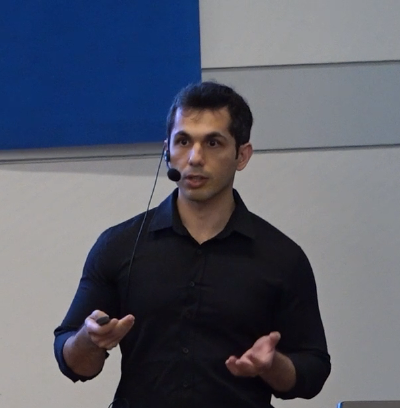
Emre Ozulker
Evidence for phantom divide line crossing from the latest data sets
The recent constraints from DESI (arXiv: 2404.03002, arXiv: 2503.14738), when combined with various SNeIa data, indicate a strong preference ($\sim3-4\sigma$) for a phantom divide line (PDL) crossing in the equation of state parameter of a supposed dynamical dark energy (DE). This is evident from their constraints preferring $w_0 larger than -1$, $w_a smaller than 0$ for the CPL parametrization of the DE, i.e., $w(a)=w_0+(1-a)w_a$. We confirm these constraints and replace the DESI data with SH0ES measurements and show that the situation does not change despite the incompatibility of SH0ES with DESI. The constraints in both cases imply an early time phantom dark energy with a late time quintessence-like behavior. In order to test if either one of these features are artifacts, we make two different modifications to the CPL parametrization such that a PDL crossing is not allowed. We show that the features of late time quintessence and early time phantom behavior are still preferred for the DESI+SNeIa combination in accordance with the usual CPL parametrization, whereas they are at some discordance when DESI is replaced with SH0ES and the late-time phantom behavior is preferred to quintessence.
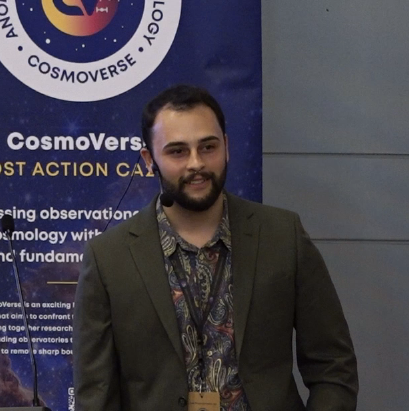
Mali Land-Strykowski
Cosmic Dipole Tensions: Confronting Planck, NVSS, RACS and CatWISE
The cosmic dipole measured in surveys of cosmologically distant sources is generally in disagreement with the kinematic expectation of the Cosmic Microwave Background (CMB). This discrepancy represents severe tension with the Cosmological Principle and challenges the standard model of cosmology. We present a Bayesian analysis that quantifies the tension between datasets used to measure the cosmic dipole. Here, we examine active galaxies in the NRAO VLA Sky Survey (NVSS), the Rapid ASKAP Continuum Survey (RACS) and the Wide-field Infrared Survey Explorer catalogue (CatWISE), and jointly analyse them with the Planck LFI observations of the CMB. Whilst we find that the Planck–quasar-dipole tension is strong, we conclude that deeper radio observations are required to disentangle the Planck–radio-dipole tension, which may be detectable at high significance in the near-future.
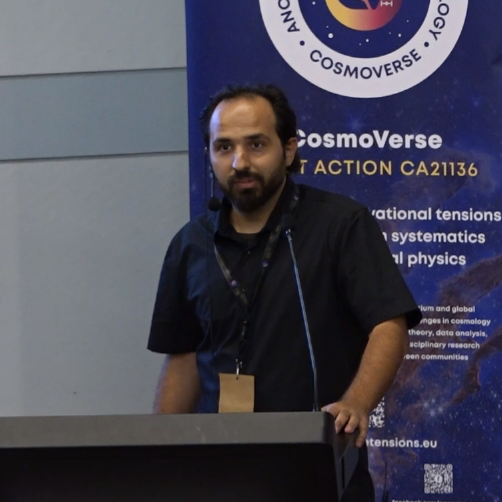
Umut Emek Demirbozan
CMB Lensing Imprints of Cosmic Voids: A test of ΛCDM
Cosmic voids, the largest observable structures in the Universe and characterized by a scarcity of galaxies, impact the Cosmic Microwave Background (CMB) through gravitational lensing, leaving a negative imprint on the CMB convergence (κ) map. This imprint offers insights into matter distribution within voids and the growth of cosmic structures. Furthermore, voids produce secondary CMB anisotropies via the Integrated Sachs–Wolfe (ISW) effect, which manifest as colder regions in the CMB and serve as probes of the Universe’s accelerated expansion. Motivated by debates on the ISW effect’s strength from voids and its potential link to the CMB Cold Spot, we explore the CMB lensing signatures of voids to test the ΛCDM model using N-body simulations. For this reason, we cross-correlated Planck CMB κ maps with voids from DES Y3, covering approximately 4 200 square degrees, employing both the 2D void-finder and the new Voxel 3D void-finder. Applying optimal matched filtering based on MICE N-body simulations, we measured the lensing amplitude Aκ = 1.03 ± 0.22 (4.6σ) for Voxel and Aκ = 1.02 ± 0.17 (5.9σ) for 2D voids, aligning with ΛCDM predictions. Inverting the void-finding process to identify superclusters yielded Aκ = 0.87 ± 0.15 (5.9σ). Our analysis indicates good agreement with the consensus ΛCDM model, with no deficit or excess signals identified. We also show that Planck noise is the primary limitation, suggesting that future data from the Atacama Cosmology Telescope (ACT), Simons Observatory (SO), South Pole Telescope (SPT), and CMB-S4 will enhance sensitivity and enable more precise measurements. Upcoming observational programs such as the Roman Space Telescope, Euclid, and LSST are expected to provide data sets that will allow the statistics of cosmic voids to be exploited as a stringent probe of the ΛCDM and to deliver significantly tighter constraints on cosmological parameters.
Yuejia Zhai
A low-redshift preference for an interacting dark energy model
We explore an interacting dark sector model in trace-free Einstein gravity where dark energy has a constant equation of state, , and the energy-momentum transfer potential is proportional to the cold dark matter density. Compared to the standard CDM model, this scenario introduces a single additional dimensionless parameter, , which determines the amplitude of the transfer potential. Using a combination of \textit{Planck} 2018 Cosmic Microwave Background (CMB), DESI 2024 Baryon Acoustic Oscillation (BAO), and Pantheon+ Type Ia supernovae (SNIa) data, we derive stringent constraints on the interaction, finding to be of the order of . While CMB and SNIa data alone do not favor the presence of such an interaction, the inclusion of DESI data introduces a mild preference for an energy-momentum transfer from dark matter to dark energy. This preference is primarily driven by low-redshift DESI BAO measurements, which favor a slightly lower total matter density compared to CMB constraints. Although the interaction remains weak and does not significantly alleviate the and tensions, our results highlight the potential role of dark sector interactions in late-time cosmology.
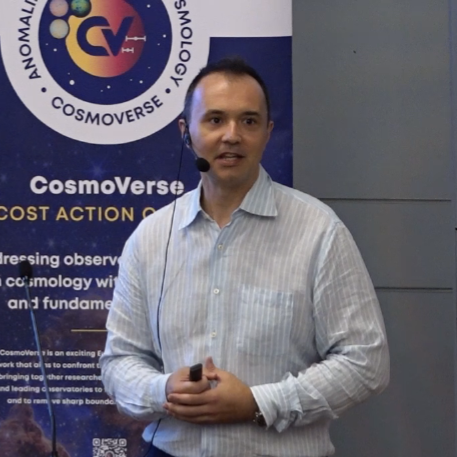
Stylianos A. Tsilioukas
Alleviating $H0$ and $\sigma8$ tensions from topological dark energy
We formulate topological holographic dark energy and we present how it can alleviate both $H_{0}$ and $\sigma 8$ tensions. The modified cosmological model is obtained by the application of the gravity thermodynamics conjecture when the corresponding Wald Gauss Bonnet entropy term is added to the standard Bekenstein Hawking one. Thus, one obtains modified Friedmann equations that depend on the rate of horizon topology change, which is directly linked to the formation and merging rate of black holes by the conservation of the second thermodynamical law. By employing the star formation rate per redshift from observations as a first approximation to the BH formation and merging rate, we obtain a phantom effective dark energy which is known to be a sufficient mechanism that can lead to the $H_{0}$ tension alleviation. Indeed, we show that for particular regions of the parameter space the scenario at hand does lead to higher $H_{0}$ values, and we verify this result performing a confrontation with observational data from Supernovae Type Ia (SNIa) and Cosmic Chronometers (CC) measurements. Additionally, analyzing the growth of structures and the evolution of the matter overdensity we show that the redshift behavior of the $f\sigma_{8}$ observable obtains smaller values than the ones arising in $\Lambda$CDM cosmology, and thus the scenario at hand can alleviate the $\sigma_{8}$ tension too. This is an advantage of Wald-Gauss-Bonnet cosmology, since the simultaneous alleviation of both tensions cannot be easily achieved within other entropic scenarios.
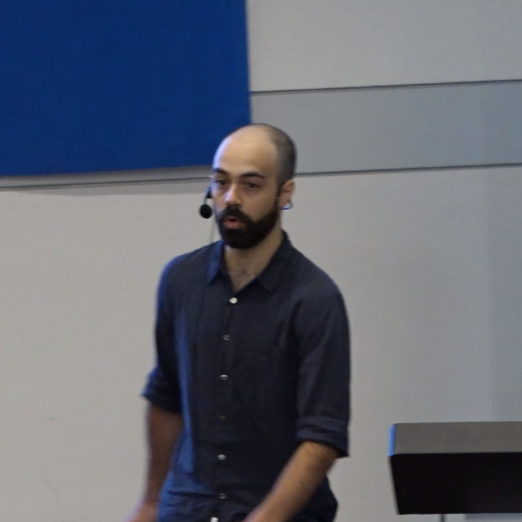
Oliver Oayda
Confronting the cosmic dipole tension
I discuss our ongoing efforts to measure the cosmic dipole in new galaxy surveys, referencing the systematic effects which can influence its measurement and forecasting the contribution of forthcoming surveys. This is motivated by the nascent cosmic dipole tension: the disagreement between the CMB dipole and counts of extragalactic sources, which has reached a high level of statistical significance ($ larger than 5 \sigma$). It is key that we understand whether this anomaly genuinely means that the rest frames of the CMB and extragalactic sources do not coincide. If so, it would throw doubt on the implicit assumption of the cosmological principle in the FLRW spacetime metric, uprooting our cosmic paradigm.
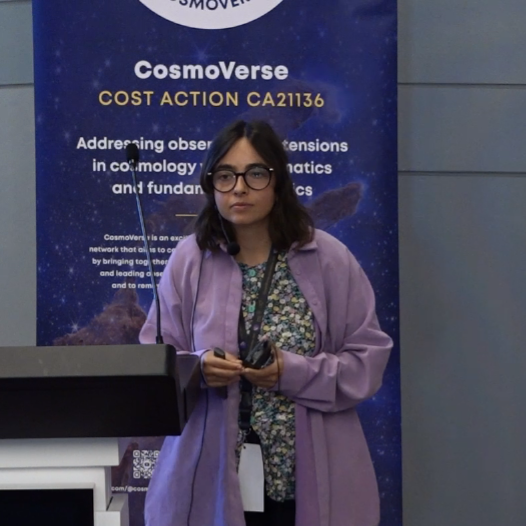
Elsa Teixeira
The distance duality relation in light of the cosmic calibration tension
The standard Lambda Cold Dark Matter (ΛCDM) cosmological model has proven remarkably successful in describing a broad range of observational data, ranging from the cosmic microwave background (CMB) radiation to the large-scale structure of the Universe. However, recent advances in precision cosmology have revealed persistent statistical discrepancies between independent data sets and observational methods. One prominent example is the “Hubble tension,” which refers to the irreconcilable predictions of the present expansion rate of the Universe when inferred from early-Universe measurements (such as the CMB) compared to local observations. Low-redshift observables like Baryon Acoustic Oscillations (BAO) and Type Ia Supernovae (SN1a) are used to build the cosmological distance ladder, which relies on calibrations using either early- or late-Universe data. Therefore, the Hubble tension is also reflected in the incompatibility between these distances and how they are calibrated. However, this comparison assumes that the distance-duality relationship (DDR) holds and can be used to compare measurements of the luminosity and angular diameter distances. In this talk, we will examine the implications of relaxing this assumption to more general relations, its implications to the current cosmic tensions and how it could potentially explain the apparent need for the introduction of new physics to address current cosmic tensions.
Fotios Anagnostopoulos
On the microphysics of the Dark Energy
We propose a novel dark energy mechanism rooted in the microscopic structure of spacetime, where quantum-induced topological transitions give rise to an effective cosmological constant. Within the framework of Euclidean Quantum Gravity, gravitational instantons emerging at the spacetime foam level induce changes in topology, activating the Gauss-Bonnet term in four dimensions. This leads to a time-evolving dark energy density proportional to the instanton density. Using quantum field theory techniques, we derive the corresponding modified Friedmann equations and analyze the evolution of the Universe under this framework. The model successfully reproduces the thermal history of the Universe and yields a fit to observational data – including type Ia supernovae, Baryon Acoustic Oscillations, and cosmic chronometers – that is statistically comparable to the standard $\Lambda$CDM model. Moreover, the scenario shows promise for addressing the $H_0$ and $\sigma_8$ tensions. These results position topological dark energy as a compelling alternative to the concordance model.
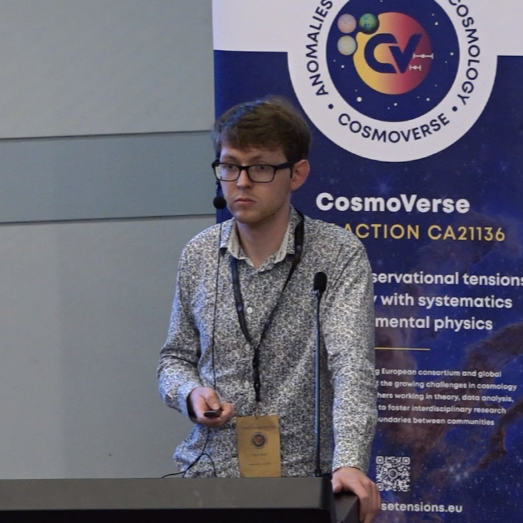
Elliot Scott
Machine Learning to improve hydrodynamic simulation resolution
Hydrodynamic simulations will be instrumental in attempting to resolve cosmological tensions such as the $S_8$ tension as they can assist with modelling key sources of uncertainty such as galaxy bias. However, for these purposes, the simulations need both large box size and high resolution, which is computationally prohibitive. In this work we instead use the connection between galaxies and their host dark matter halo to populate a dark-matter-only simulation. We use the Extremely Randomized Trees machine learning algorithm with the FLAMINGO suite of simulations – a set of hydrodynamic and counterpart dark-matter-only simulations with box side length ranging from 1-2.8 Gpc and particle mass from $10^8M_{\odot}$ to $10^{10}M_{\odot}$. We use a two-tiered model that decides whether or not a halo hosts a galaxy, then models the stellar mass of said galaxy. We find that this method produces reliable results not only for the total stellar mass and correlation functions of galaxies, but also models the distribution of stellar masses within haloes of a give mass with higher accuracy than the standard approaches used to date.
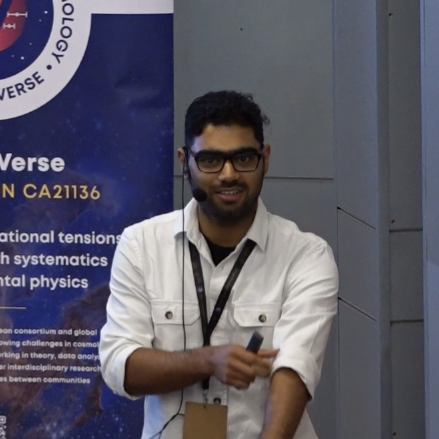
Kishan Deka
Impact of galactic foregrounds on delensing of CMB maps and detection of the primordial gravitational waves
In the era of high precision Cosmic Microwave Background (CMB) anisotropy measurements, detection of the primordial graviational waves (PGW) will be one of the main goals of the upcoming CMB experiments. To make it possible precise cleaning of the CMB maps from diffused contamination coming from polarised galactic emission and CMB gravitational lensing effect is needed. We investigate the impact of residual galactic foregrounds in lensing reconstruction and delensing for CMB-S4 like experiment providing a complete pipeline for such experiment. This impact can be also important for the constraint on the $\sigma_8$ parameter estimated using the lensing potential. In this work, we pay special attention to forecast constraints for the amplitude of the primordial gravitational waves and their senstivity to different foreground models with varying complexity. As we will show, non-Gaussian galactic foregrounds are seen to have significant impact on the gravitational wave amplitude constraints. Accurate modelling of the foregorunds will be crucial for unbiased estimation of the amplitude.
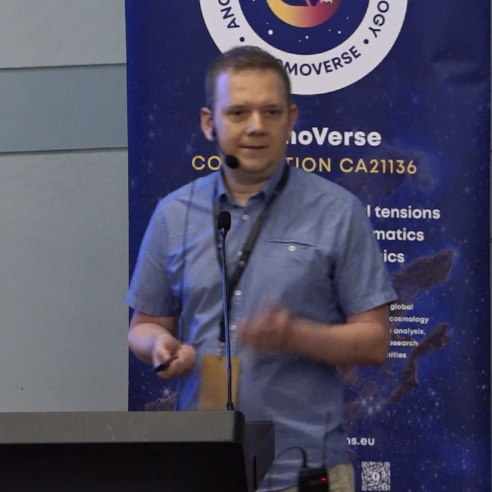
Pawel Bielewicz
Cosmological analysis from the cross-correlation of the CMB gravitational lensing and galaxy surveys
The effect of gravitational lensing of the Cosmic Microwave Background (CMB) provides a unique opportunity to obtain a picture of the gravitational potential of the large-scale structure of the Universe at very high redshifts. Tomographic cross-correlation of the gravitational potential with other tracers of the large-scale structure at known redshifts allows tracing the evolution of the structure through estimation of the matter fluctuation amplitude $\sigma_8$, shedding new light on the observed tensions between different estimates of the amplitude. It can also be used for to remove the lensing effect from CMB anisotropy maps and improve constraints on cosmological parameters, in particular the amplitude of the primordial gravitational waves. However, the analysis of the upcoming data requires a very good understanding of any systematic errors that may bias the cross-correlation measurements. In this talk I will show how much the reconstruction of the CMB lensing potential is improved by the tomographic analysis and how much this will affect the estimation of the $\sigma_8$ parameter for the upcoming CMB experiments and galaxy surveys.
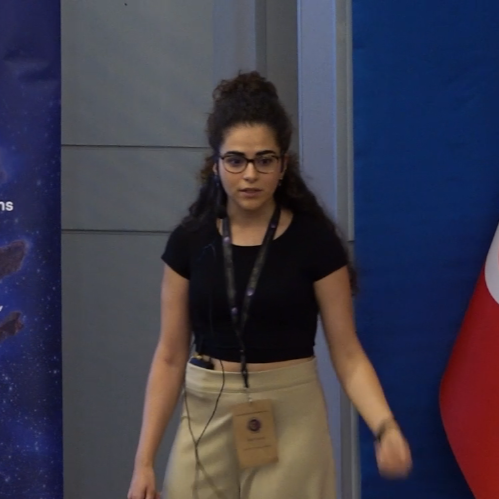
Elisa Fazzari
The effective running Hubble parameter in SNe Ia as a marker for the dark energy nature
We investigate a theoretical framework for the Universe dynamics, based on the possible creation of dark energy constituents by the time-varying gravitational field of the expanding Universe. The proposed scenario is compared to specific cases of the reduced Chevallier-Polarski-Linder (CPL) parameterization, with the aim of probing the nature of dark energy. We construct, from our model and the reference models, a theoretical running Hubble constant, i.e. a function of the redshift, which highlights the difference between modified dynamics and the $\Lambda$CDM-one. Then, by this function, we provide a fit of the corresponding running Hubble constant as it emerges from the binned analysis of SNe Ia data sample, i.e. the Pantheon and the Master samples, that is a collection of SNe Ia from 4 catalogs: Pantheon, Pantheon+, JLA, and DES without duplicated SNe Ia. The main result of our study is the identification of a strong sensitivity of the running Hubble constant and the demonstration that the binned supernova data indicates a phantom nature of Dark Energy for z between $0 and 1.5$, clearly in disagreement with the DESI Collaboration results.
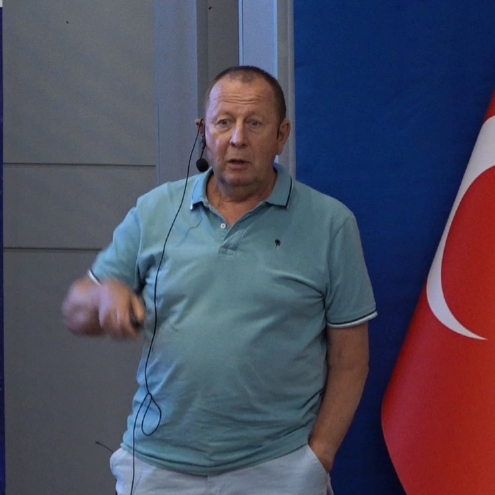
Oleksandr Zhuk
The Ph-LsCDM Model: Towards a Solution to the H0 tension Problem
In my talk, I will present a model where the Universe is filled with a phantom scalar field with a potential in the form of a hyperbolic tangent, as well as cold dark matter and radiation. This model is free from the shortcomings usually attributed to phantom models and undergoes a rapid Anti-de Sitter to de Sitter transition. At the background level, a detailed analysis of the model is performed. The numerical integration of the equations of motion is performed in such a way that both the CMB and SH0ES data are satisfied. Thus, this model points to a possible solution to the problem of cosmological tensions in theories where the cosmological constant changes its sign.
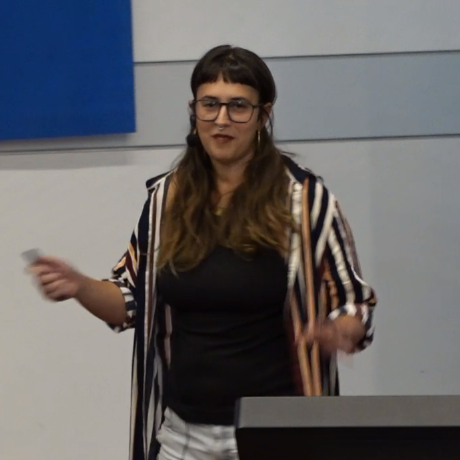
Jessica Santiago
Primordial Black Holes, Charge, and Dark Matter: Rethinking Evaporation Limits
Earlier studies investigating the allowed fraction of dark matter as primordial black holes (PBHs) tend to completely rule out PBHs with masses smaller than \~10⁻¹⁵ solar masses. This is due to the lack of evidence for Hawking radiation coming from the final evaporation stages of such small PBHs. These limits, however, make the key assumption that these PBHs can be modelled as uncharged, non-rotating Schwarzschild black holes. This talk concerns changes to these lower mass bounds when charge is included i.e., by going to Reissner–Nordström black holes as models for PBHs. In particular, the analysis presented here assumes a “dark” U(1) charge (assumed to be present in the early universe), and employs the Hiscock and Weems model for charged black hole evaporation to properly account for the Schwinger effect. By assigning a heavier dark electron mass and/or increasing its charge, this approach not only suppresses Hawking radiation but also mitigates Schwinger pair production, effectively extending the lifespan of PBHs beyond the age of the universe, bypassing the conventional wisdom that such small-mass black holes would have evaporated entirely by now.
Venue
The conference will take place in İstanbul at of the Istanbul Technical University (https://maps.app.goo.gl/yoP5Apj5k4CJkbgcA)
Important dates
18 November 2024: Registration and abstract submission opens
24 April 2025: Registration and abstract submission deadline
24-26 June 2025: Conference days
24 June 2025: Welcome Drinks/ Boat trip
25 June 2025: Poster session and Conference Dinner
26 June 2025: Public Lecture
27 June 2025: CosmoVerse COST Action Management Committee meeting for members
Local organizing committee (LOC)
Özgür Akarsu (İstanbul Technical University)
A. Savaş Arapoğlu (İstanbul Technical University)
Tolga Birkandan (İstanbul Technical University)
Emre Onur Kahya (İstanbul Technical University)
Nihan Katırcı (Doğuş University)
Neşe Özdemir (İstanbul Technical University)
Mehmet Özkan (İstanbul Technical University)
Maria Caruana (İstanbul Technical University)
Luis A. Escamilla (İstanbul Technical University)
Merve Uzun (İstanbul Technical University)
Enes Bal (İstanbul Technical University)
Bilal Bulduk (İstanbul Technical University)
Arman Çam (İstanbul Technical University)
Roza Mercan Eskin (İstanbul Technical University)
Mine Gökçen (İstanbul Technical University)
Cihad Kıbrıs (İstanbul Technical University)
Berat Karadavut (Doğuş University)
Burcu Öztürk (İstanbul Technical University)
Şafak Turhan (İstanbul Technical University)
Scientific organizing committee (SOC)
Jackson Levi Said (University of Malta, MT)
Eleonora Di Valentino (Sheffield University, UK)
Noemi Frusciante (UNINA, IT)
Agnieszka Pollo (National Center for Nuclear Research & Astronomical Observatory of the Jagiellonian University, PL)
Marika Asgari (Newcastle University, UK)
